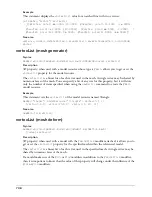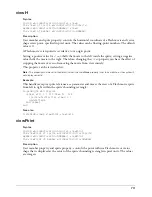
706
This statement parses the string "3 5" and returns the value of the portion of the string that Lingo
understands:
put value("3 5")
-- 3
See also
string()
,
integer()
,
float()
vector()
Syntax
vector (
x
,
y
,
z
)
Description
3D data type and function; a vector describes a point in 3D space according to the parameters
x
,
y
, and
z
which are the specific distances from the reference point along the x-axis, y-axis, and z-
axis, respectively. If the vector is in world space, the reference point is the world origin, vector(0,
0, 0). If the vector is in object space, the reference point is the object’s position and orientation.
This function returns a vector object.
Vector values can be operated upon by the
+
,
-
,
*
and
/
operators. See their individual definitions
for more information.
Examples
This statement creates a vector and assigns it to the variable MyVector:
MyVector = vector(10.0, -5.0, 0.0)
This statement adds two vectors and assigns the resulting value to the variable ThisVect:
ThisVect = vector(1.0, 0.0, 0.0) + vector(0.0, -12.5, 2.0)
put ThisVect
-- vector(1.0000, -12.5000, 2.0000)
See also
+ (addition) (3D)
,
- (subtraction)
,
* (multiplication)
,
/ (division) (3D)
version
Syntax
version
Description
Keyword; system variable that contains the version string for Director. The same string appears in
the Macintosh Finder’s Info window.
Example
This statement displays the version of Director in the Message window:
put version
Summary of Contents for DIRECTOR MX-LINGO DICTIONARY
Page 1: ...Lingo Dictionary Macromedia Director MX...
Page 756: ...Index 756...
















































